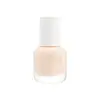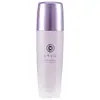innisfree Light Fitting Makeup Base SPF 23 Versus Tatcha The Liquid Silk Canvas: Featherweight Protective Primer
What's inside
What's inside
 Key Ingredients
Key Ingredients

 Benefits
Benefits

 Concerns
Concerns

 Ingredients Side-by-side
Ingredients Side-by-side

Water
Skin ConditioningDimethicone
EmollientPropanediol
SolventCaprylyl Methicone
Skin ConditioningCI 77891
Cosmetic ColorantEthylhexyl Salicylate
UV AbsorberButyloctyl Salicylate
Skin ConditioningTrisiloxane
Skin ConditioningMethyl Trimethicone
Skin ConditioningDimethicone/Vinyl Dimethicone Crosspolymer
Skin ConditioningPhenyl Trimethicone
Skin ConditioningPolyglyceryl-3 Polydimethylsiloxyethyl Dimethicone
Skin Conditioning1,2-Hexanediol
Skin ConditioningLauryl Polyglyceryl-3 Polydimethylsiloxyethyl Dimethicone
Skin ConditioningSodium Chloride
MaskingAlumina
AbrasiveDisteardimonium Hectorite
StabilisingSilica
AbrasiveXylitol
HumectantHydrogenated Lecithin
EmulsifyingCI 77492
Cosmetic ColorantAluminum Hydroxide
EmollientCaprylyl Glycol
EmollientSimethicone
EmollientEthylhexylglycerin
Skin ConditioningTriethoxycaprylylsilane
Trihydroxystearin
Skin ConditioningStearic Acid
CleansingCI 77491
Cosmetic ColorantParfum
MaskingTocopheryl Linoleate
AntioxidantSimmondsia Chinensis Seed Oil
EmollientCamellia Sinensis Seed Oil
HumectantHexyl Cinnamal
PerfumingCI 77499
Cosmetic ColorantLinalool
PerfumingLimonene
PerfumingTocopherol
AntioxidantPropylene Glycol
HumectantSodium Hyaluronate
HumectantWater, Dimethicone, Propanediol, Caprylyl Methicone, CI 77891, Ethylhexyl Salicylate, Butyloctyl Salicylate, Trisiloxane, Methyl Trimethicone, Dimethicone/Vinyl Dimethicone Crosspolymer, Phenyl Trimethicone, Polyglyceryl-3 Polydimethylsiloxyethyl Dimethicone, 1,2-Hexanediol, Lauryl Polyglyceryl-3 Polydimethylsiloxyethyl Dimethicone, Sodium Chloride, Alumina, Disteardimonium Hectorite, Silica, Xylitol, Hydrogenated Lecithin, CI 77492, Aluminum Hydroxide, Caprylyl Glycol, Simethicone, Ethylhexylglycerin, Triethoxycaprylylsilane, Trihydroxystearin, Stearic Acid, CI 77491, Parfum, Tocopheryl Linoleate, Simmondsia Chinensis Seed Oil, Camellia Sinensis Seed Oil, Hexyl Cinnamal, CI 77499, Linalool, Limonene, Tocopherol, Propylene Glycol, Sodium Hyaluronate
Saccharomyces/Rice Ferment Filtrate
Skin ConditioningDimethicone
EmollientWater
Skin ConditioningHdi/Trimethylol Hexyllactone Crosspolymer
Propanediol
SolventGlycerin
HumectantPolymethylsilsesquioxane
Dimethicone/Vinyl Dimethicone Crosspolymer
Skin ConditioningParfum
MaskingCamellia Sinensis Leaf Extract
AntimicrobialCladosiphon Okamuranus Extract
Skin ConditioningSerica
HumectantSericin
Skin ConditioningHydrolyzed Silk
HumectantCaesalpinia Spinosa Fruit Extract
Skin ProtectingKappaphycus Alvarezii Extract
Skin ConditioningYeast Extract
Skin ConditioningPEG/PPG-18/18 Dimethicone
EmulsifyingPolyglyceryl-2 Diisostearate
EmulsifyingDimethicone/PEG-10/15 Crosspolymer
Distearyldimonium Chloride
Trimethylsiloxysilicate
EmollientSilica
AbrasiveZinc Stearate
Cosmetic ColorantAluminum Hydroxide
EmollientEthylhexylglycerin
Skin Conditioning1,2-Hexanediol
Skin ConditioningCaprylyl Glycol
EmollientBiosaccharide Gum-4
Skin ConditioningIsopropyl Alcohol
SolventDipropylene Glycol
HumectantSodium Citrate
BufferingTocopherol
AntioxidantPhenoxyethanol
PreservativeCitral
PerfumingLimonene
PerfumingLinalool
PerfumingMica
Cosmetic ColorantTin Oxide
AbrasiveCI 77891
Cosmetic ColorantCI 77491
Cosmetic ColorantSaccharomyces/Rice Ferment Filtrate, Dimethicone, Water, Hdi/Trimethylol Hexyllactone Crosspolymer, Propanediol, Glycerin, Polymethylsilsesquioxane, Dimethicone/Vinyl Dimethicone Crosspolymer, Parfum, Camellia Sinensis Leaf Extract, Cladosiphon Okamuranus Extract, Serica, Sericin, Hydrolyzed Silk, Caesalpinia Spinosa Fruit Extract, Kappaphycus Alvarezii Extract, Yeast Extract, PEG/PPG-18/18 Dimethicone, Polyglyceryl-2 Diisostearate, Dimethicone/PEG-10/15 Crosspolymer, Distearyldimonium Chloride, Trimethylsiloxysilicate, Silica, Zinc Stearate, Aluminum Hydroxide, Ethylhexylglycerin, 1,2-Hexanediol, Caprylyl Glycol, Biosaccharide Gum-4, Isopropyl Alcohol, Dipropylene Glycol, Sodium Citrate, Tocopherol, Phenoxyethanol, Citral, Limonene, Linalool, Mica, Tin Oxide, CI 77891, CI 77491
Ingredients Explained
These ingredients are found in both products.
Ingredients higher up in an ingredient list are typically present in a larger amount.
1,2-Hexanediol is a synthetic liquid and another multi-functional powerhouse.
It is a:
- Humectant, drawing moisture into the skin
- Emollient, helping to soften skin
- Solvent, dispersing and stabilizing formulas
- Preservative booster, enhancing the antimicrobial activity of other preservatives
Aluminum Hydroxide is a form of aluminum. It can be naturally found in nature as the mineral gibbsite. In cosmetics, Aluminum Hydroxide is used as a colorant, pH adjuster, and absorbent.
As a colorant, Aluminum Hydroxide may add opacity, or reduce the transparency. Aluminum hydroxide is contains both basic and acidic properties.
According to manufacturers, this ingredient is an emollient and humectant. This means it helps hydrate the skin.
In medicine, this ingredient is used to help relieve heartburn and help heal ulcers.
There is currently no credible scientific evidence linking aluminum hydroxide in cosmetics to increased cancer risk.
Major health organizations allow the use of aluminum hydroxide in personal care products and have not flagged it as a carcinogenic risk at typical usage levels.
Learn more about Aluminum HydroxideCaprylyl Glycol is a humectant and emollient, meaning it attracts and preserves moisture.
It is a common ingredient in many products, especially those designed to hydrate skin. The primary benefits are retaining moisture, skin softening, and promoting a healthy skin barrier.
Though Caprylyl Glycol is an alcohol derived from fatty acids, it is not the kind that can dry out skin.
This ingredient is also used as a preservative to extend the life of products. It has slight antimicrobial properties.
Learn more about Caprylyl GlycolCi 77491 is also hydrated iron III oxide. It's sole purpose is to give a red/pink hue to products.
Iron III oxides are classified as inorganic chemicals for coloring.
Synthetically created Ci 77491 is considered safer than those naturally found. This is because the synthetically created version may contain less impurities. Iron oxides are generally non-toxic and non-allergenic.
Learn more about CI 77491Ci 77891 is a white pigment from Titanium dioxide. It is naturally found in minerals such as rutile and ilmenite.
It's main function is to add a white color to cosmetics. It can also be mixed with other colors to create different shades.
Ci 77891 is commonly found in sunscreens due to its ability to block UV rays.
Learn more about CI 77891Dimethicone is a type of synthetic silicone created from natural materials such as quartz.
What it does:
Dimethicone comes in different viscosities:
Depending on the viscosity, dimethicone has different properties.
Ingredients lists don't always show which type is used, so we recommend reaching out to the brand if you have questions about the viscosity.
This ingredient is unlikely to cause irritation because it does not get absorbed into skin. However, people with silicone allergies should be careful about using this ingredient.
Note: Dimethicone may contribute to pilling. This is because it is not oil or water soluble, so pilling may occur when layered with products. When mixed with heavy oils in a formula, the outcome is also quite greasy.
Learn more about DimethiconeThis ingredient is a silicone used to improve the texture of products and absorb oil. It does not get absorbed into the skin.
Like other silicones, Dimethicone/Vinyl Dimethicone Crosspolymer helps condition the skin by creating a barrier. In this sense, it can act as an emollient and trap moisture in.
This ingredient is a type of elastomer.
Learn more about Dimethicone/Vinyl Dimethicone CrosspolymerEthylhexylglycerin (we can't pronounce this either) is commonly used as a preservative and skin softener. It is derived from glyceryl.
You might see Ethylhexylglycerin often paired with other preservatives such as phenoxyethanol. Ethylhexylglycerin has been found to increase the effectiveness of these other preservatives.
Limonene is a fragrance that adds scent and taste to a formulation.
It's found in the peel oil of citrus fruits and other plants such as lavender and eucalyptus. The scent of limonene is generally described as "sweet citrus".
Limonene acts as an antioxidant, meaning it helps neutralize free radicals.
When exposed to air, oxidized limonene may sensitize the skin. Because of this, limonene is often avoided by people with sensitive skin.
The term 'fragrance' is not regulated in many countries. In many cases, it is up to the brand to define this term. For instance, many brands choose to label themselves as "fragrance-free" because they are not using synthetic fragrances. However, their products may still contain ingredients such as essential oils that are considered a fragrance.
Learn more about LimoneneLinalool is a fragrance and helps add scent to products. It's derived from common plants such as cinnamon, mint, citrus, and lavender.
Like Limonene, this ingredient oxidizes when exposed to air. Oxidized linalool can cause allergies and skin sensitivity.
This ingredient has a scent that is floral, spicy tropical, and citrus-like.
Learn more about LinaloolParfum is a catch-all term for an ingredient or more that is used to give a scent to products.
Also called "fragrance", this ingredient can be a blend of hundreds of chemicals or plant oils. This means every product with "fragrance" or "parfum" in the ingredients list is a different mixture.
For instance, Habanolide is a proprietary trade name for a specific aroma chemical. When used as a fragrance ingredient in cosmetics, most aroma chemicals fall under the broad labeling category of “FRAGRANCE” or “PARFUM” according to EU and US regulations.
The term 'parfum' or 'fragrance' is not regulated in many countries. In many cases, it is up to the brand to define this term.
For instance, many brands choose to label themselves as "fragrance-free" because they are not using synthetic fragrances. However, their products may still contain ingredients such as essential oils that are considered a fragrance by INCI standards.
One example is Calendula flower extract. Calendula is an essential oil that still imparts a scent or 'fragrance'.
Depending on the blend, the ingredients in the mixture can cause allergies and sensitivities on the skin. Some ingredients that are known EU allergens include linalool and citronellol.
Parfum can also be used to mask or cover an unpleasant scent.
The bottom line is: not all fragrances/parfum/ingredients are created equally. If you are worried about fragrances, we recommend taking a closer look at an ingredient. And of course, we always recommend speaking with a professional.
Learn more about ParfumPropanediol is an all-star ingredient. It softens, hydrates, and smooths the skin.
It’s often used to:
Propanediol is not likely to cause sensitivity and considered safe to use. It is derived from corn or petroleum with a clear color and no scent.
Learn more about PropanediolSilica, also known as silicon dioxide, is a naturally occurring mineral. It is used as a fine, spherical, and porous powder in cosmetics.
Though it has exfoliant properties, the function of silica varies depending on the product.
The unique structure of silica enhances the spreadability and adds smoothness, making it a great texture enhancer.
It is also used as an active carrier, emulsifier, and mattifier due to its ability to absorb excess oil.
In some products, tiny microneedles called spicules are made from silica or hydrolyzed sponge. When you rub them in, they lightly polish away dead skin layers and enhance the penetration of active ingredients.
Learn more about SilicaTocopherol (also known as Vitamin E) is a common antioxidant used to help protect the skin from free-radicals and strengthen the skin barrier. It's also fat soluble - this means our skin is great at absorbing it.
Vitamin E also helps keep your natural skin lipids healthy. Your lipid skin barrier naturally consists of lipids, ceramides, and fatty acids. Vitamin E offers extra protection for your skin’s lipid barrier, keeping your skin healthy and nourished.
Another benefit is a bit of UV protection. Vitamin E helps reduce the damage caused by UVB rays. (It should not replace your sunscreen). Combining it with Vitamin C can decrease sunburned cells and hyperpigmentation after UV exposure.
You might have noticed Vitamin E + C often paired together. This is because it is great at stabilizing Vitamin C. Using the two together helps increase the effectiveness of both ingredients.
There are often claims that Vitamin E can reduce/prevent scarring, but these claims haven't been confirmed by scientific research.
Learn more about TocopherolWater. It's the most common cosmetic ingredient of all. You'll usually see it at the top of ingredient lists, meaning that it makes up the largest part of the product.
So why is it so popular? Water most often acts as a solvent - this means that it helps dissolve other ingredients into the formulation.
You'll also recognize water as that liquid we all need to stay alive. If you see this, drink a glass of water. Stay hydrated!
Learn more about Water